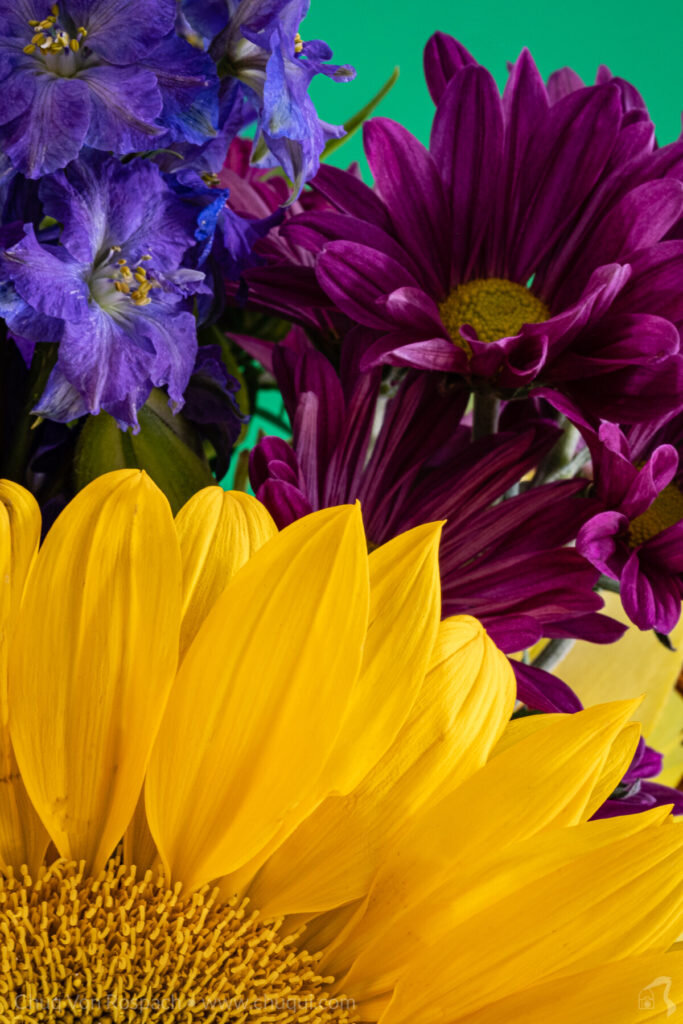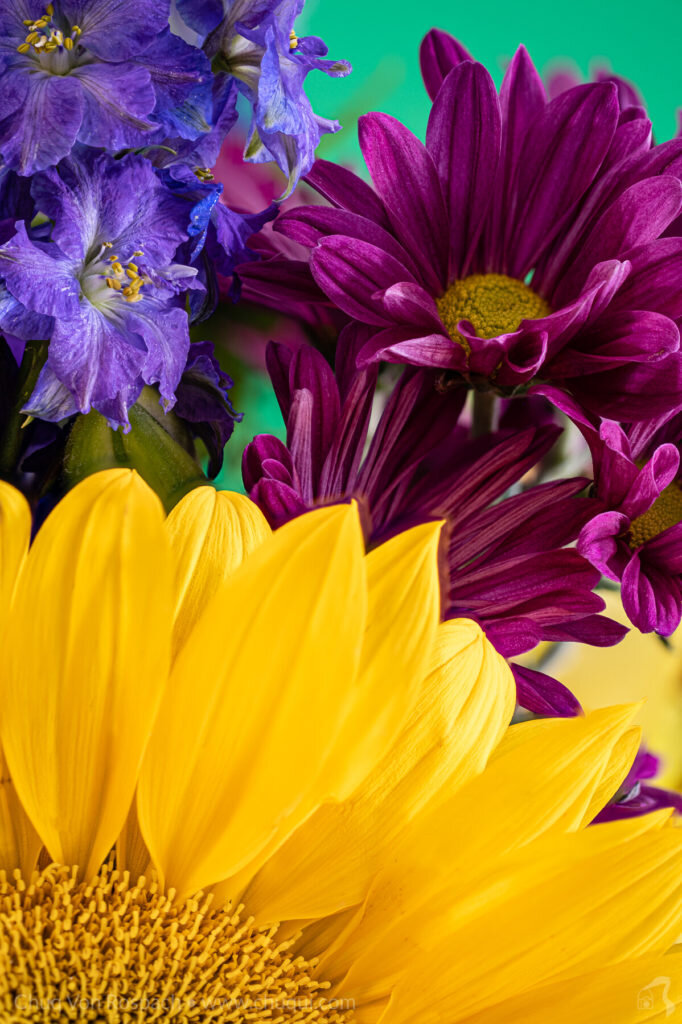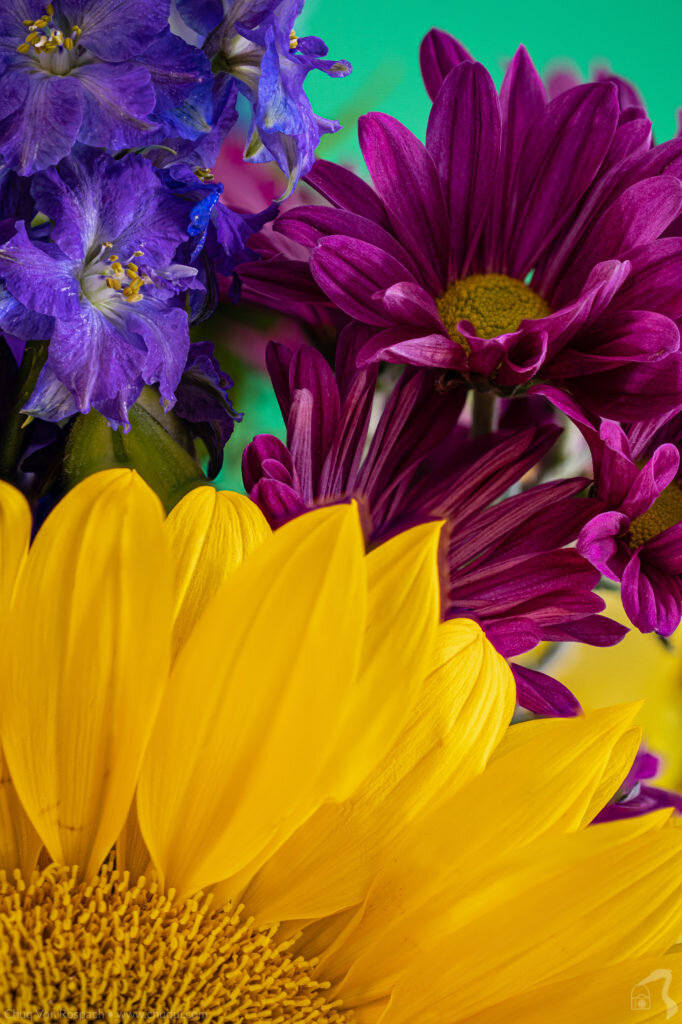Focus Stacking: Helicon Focus vs Photoshop
I'm continuing to explore and experiment with focus stacking. The latest has been with testing tools to do the stacking -- a friend seeing my first post on this sent me a note that basically boiled down to dude: Helicon Focus is your friend. Given the quality of his macro work, I wanted to check it out.
(you can also see Focus Stacking with the Fuji X-T3 for my earlier writing on Focus stacking)
Helicon Focus
Helicon Focus is a dedicated Focus Stacking app available for both Windows and the Mac. It's not free -- a basic license will run you $30/year or $115 for a lifetime license. I downloaded the demo (30 days unrestricted) to see how it compared to doing focus stacking in Photoshop.
The test
What I ended up doing was shooting a 45 image focus stack using the X-T3, all images shot at F2.8 using the 60mm Macro lens. The image above is the first image of the stack. Here is the final image:
I then did a focus stack of these 45 images in both Photoshop and Helicon Focus, and compared both the process and the end result. Fuji X-T3 DNG files average around 36 megabytes apiece. The set of 45 images takes up about 1.7Gb on disk.
Actually, the first question that I think we should ask is Do I need to Focus Stack this in the first place? To see what I could get from a single image, here's the shot taken at F/22, the effective deepest depth of field with that lens at that composition:
That's actually pretty good, but there's some sharpness falloff on the flowers to the right at the back. Let's see if we can do better.
The Photoshop Test
To run the Photoshop test, I select the 45 images in Lightroom and then choose Photo->Edit in->Open as Layers in Photoshop. This fires up Photoshop and hands the 45 images. Photoshop creates a file and loads each image into a separate layer.
Once that's done, in Photoshop, you select all of the layers and run Edit->Auto-Align images followed by Edit->Auto-Blend layers choosing the stacking option.
My current computer is a fairly recent iMac 5K, with a 3.8GHz i5, 25Gb of memory and a Radio Pro 580 GPU. Not the most powerful model but it's pretty well built out. Processing the image took:
8 minutes for Photoshop to import the images and be ready to work on them
16 minutes for the auto-align to run
12 minutes for the focus stack to run
4 minutes to flatten the image for saving
That's 40 minutes of processing time. After flattening the image, I saved it as an uncompressed TIFF file, which was a 166Mb file. As soon as it finished saving the image, Photoshop crashed (whee!).
During processing, Photoshop grew to take up over 16Gb of memory, and made the system unusable for anything else, something I've only seen happen on this machine while rendering 4K video.
The end result (exported as a JPG) by Lightroom:
The Helicon Focus test
With Helicon Focus, I fired up the image, and I dropped the 45 DNG files on it, then ran the stack using default parameters. When it was done, I saved the file. Where Photoshop saves the file as a TIFF, Helicon Focus can save it as a DNG which means I can do unrestricted post-processing on it if I want to after the stacking. That alone makes Helicon Focus interesting to me.
Processing the image took:
Importing images: 3 minutes
Render the focus stack: 13 minutes
Total processing time: 16 minutes
Helicon Focus used 8Gb of RAM during processing, and created a 74Mb DNG file. The system was usable as normal during processing.
The end result:
To compare the results, let's look at them side by side (Lightroom version on the left):
My take?
Overall, I prefer the Helicon Focus image. The Helicon Focus in general is brighter and seems sharper to me. I like the colors better, the purple flowers on the left are much better, and the yellow center of the flowers on the right are brighter and sharper.
Overall, both images are good, but I think the Helicon Focus image is a bit better. Interestingly, both of them have very slight halos around the yellow flower at the bottom, evidently a rendering artifact from the blurred version in the later images in the stack. I expect it could be ignored, but I'd probably want to try to clean that up a bit.
Overall, I'd give the Photoshop result a 7.5 of 10, and the Helicon Focus a 9.
Should you buy Helicon Focus?
Is Helicon Focus worth having? My decision was yes, and I've bought a license. It'll be my normal processor moving forward. Even if the quality were the same, I'd buy it for the speed and convenience improvement, as well as the ability to save as DNG, but the image results are better as well. It seems like exactly what I'd expect from a dedicated tool vs the more general processor: it's faster, more effecient on resources and gives me noticeably better results.
So to me, it's more than worth the price. What do you think?






